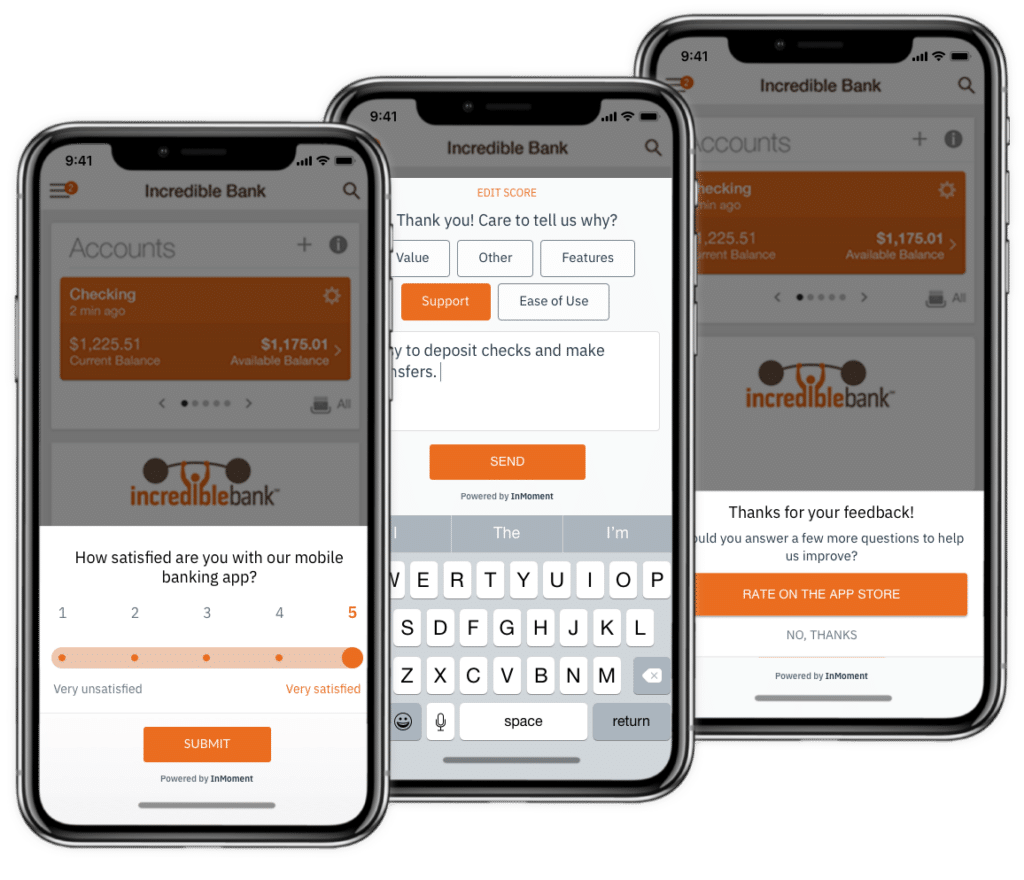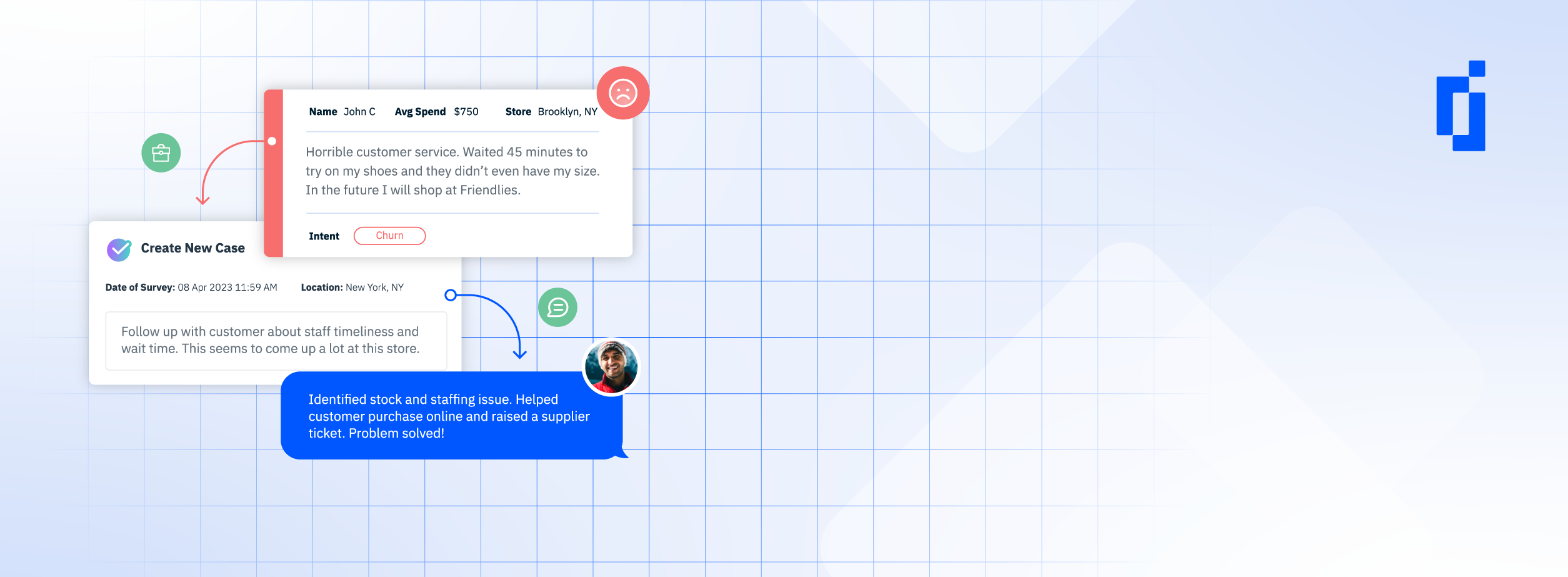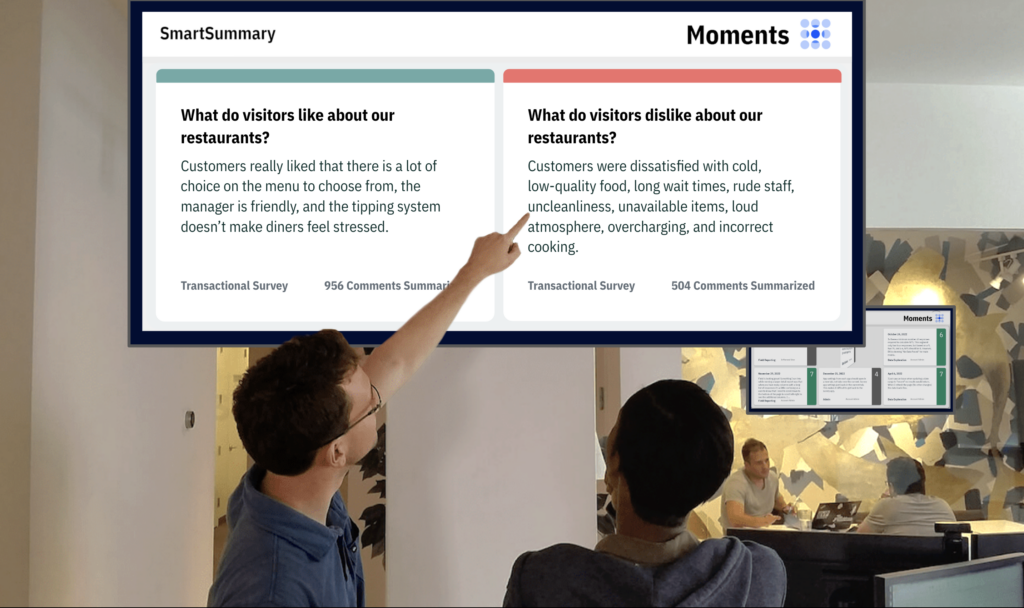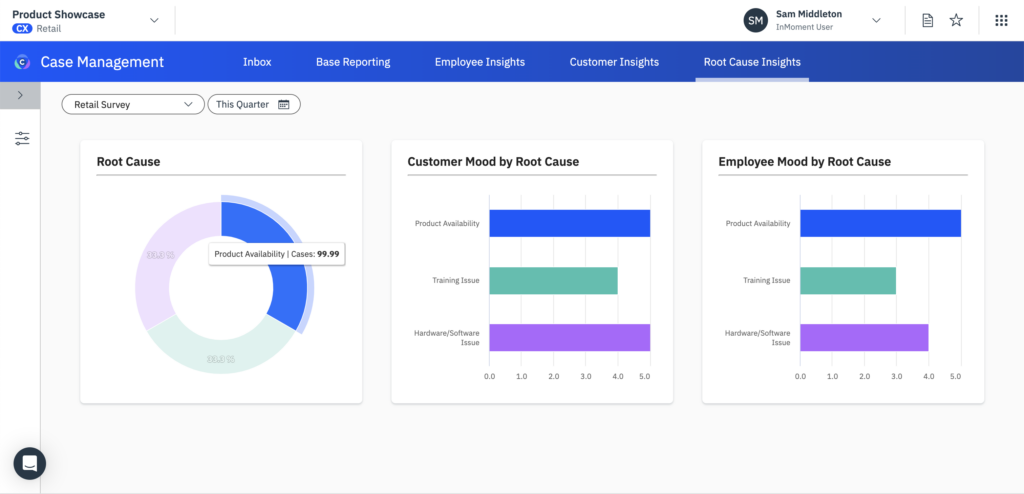Customer Experience 101
Surveys are a way to compile data from a group of people, but they can be more than that. Surveys are also direct insight into your customers and information about how they feel about your company, products, and services. How did your customers perceive your most recent product launch? How do they feel about your company’s social media presence? Surveys are a direct line to find out and glean valuable information about your customers and your company.
But not all surveys are the same, and different types of surveys can provide different insights. There are many types of surveys your company can choose from, and it can be hard to determine which one would be the best for your needs. So to help you figure out the right type of surveys for your needs, we’ll walk you through the most common survey types, the benefits of using surveys, and how to get started today.
How to Choose the Right Survey Method
Prior to launching a survey, it’s imperative to consider what resources are available to you to conduct the surveys, your goals and objectives, the sample and population size and many other factors to consider:
- Time: Typically in-person surveys require more time than online surveys. Consider how much time you have available and how soon you need results.
- Money: Consider what your budget is and how much it will cost to conduct your survey of choice.
- Audience: Consider your audience demographic. Online surveys are typically more difficult for an older population. Consider what type of surveys yield a higher response rate for your audience.
- Technology Capabilities: Consider whether you have the proper technology that can handle your data analytics.
- Research Expertise: Consider whether you have the proper research knowledge such as clearly defined problems, objectives, a target audience, proper data tracking capabilities etc.
- Responses: Consider whether you have strategies in place to combat slow response or no response rates.
The Most Common Types of Surveys
There are so many survey types, but we’ll explore 7 types of surveys in depth since these are the most common and beneficial for most companies.
Online Surveys
Online surveys are one of the most popular types of surveys and for good reason. Online surveys are easy to create, disseminate, and gather responses—challenges many other survey types face. Using an online survey platform, your company can create a survey easily and quickly—often with a wide range of question types—and send it out to customers within seconds. Your customers can then answer the survey at their convenience and send their responses back to you instantaneously.
In addition, online surveys are beneficial for companies that have a wide reach and customers around the world. Online surveys are accessible by anyone anywhere with only the click of a button. You can reach a wide audience with this type of survey.
But like any survey type, online surveys do have their cons. Online surveys could be accessed anywhere, but the survey recipient has to have internet access. There are parts of the globe and some households that don’t have internet access (or easy access to public internet) that could be valuable contributors to your survey. In addition, online surveys can provide a wealth of information, but they fall short in some depth. There’s no organic way to ask follow up questions or to probe deeper into an answer when you want more insights.
Paper Surveys
Paper surveys are sometimes looked at as old fashioned, but they do still reach an audience that can’t access many other types of surveys. Many audiences—like senior citizens or those without internet access—are far more likely to respond or far more comfortable with paper surveys than online surveys. Plus paper surveys are often easier to read for many since they’re printed in large fonts with black text on white paper.
But one major con of paper surveys is that they can be one of the pricier types of surveys. Paper surveys have to be printed off, sometimes in large quantities, to reach your audience. That can add up if you’re trying to reach a large amount of people. In addition, paper surveys aren’t the most environmentally friendly way to survey.
Mail Surveys
Mail surveys are one of the most traditional types of surveys. While some people may look at them as old fashioned, there’s a reason this method has been around for so long: it feels authentic and offers you access to an audience that may be less inclined to respond online. Those demographics who are less likely to answer an online email survey are often familiar with mail surveys and will be willing to respond. In addition, mail surveys also have a wide geographic reach since most places are accessible by post.
When it comes to mail surveys, there are a couple of things to plan for in advance. First, creating the surveys can often be simple, and you do only need to print them off to distribute. But you should keep in mind that your response rate will often be lower if you don’t pre-paid return envelopes for the participants. One drawback of mail surveys is that they require some extra work on the part of the survey participants—something that often lowers response rates. You’ll want to reduce that level of work as much as possible by providing return envelopes that simply need to be dropped in a mailbox.
That brings up the second con of mail surveys: they can cost your company a little bit more. The cost of printing, envelopes, and postage can add up—but could be worth it for the responses you receive. Second, when it comes to response rate, less is more. Mail surveys have a better completion rate if they’re short. Try to keep your survey to about a page. Not only will that increase your chances of completed responses, short surveys also reduce printing and postage costs.
Telephone Surveys
Telephone surveys are another more old fashioned method of surveying that has been around since landlines. Now that nearly everyone carries a phone with them or has one at phone, telephone surveys are alive and well in surveying methods. For a telephone survey, a real live interviewer will ask a series of questions and record responses. With modern technology, it’s easy for interviewers to insert responses directly into a computer system to chart and track data. In addition, telephone surveys let interviewers add a personal touch to the conversation that isn’t possible for online, mail, or paper surveys. The chance to ask follow-up questions can give the interviewers a chance to probe for deeper insights and emotions.
Telephone surveys still face a few cons. These surveys may be cost effective, but they should be kept short. Fifteen minutes is the cap for an effective phone survey. In addition, phone surveys run the risk of looking like a telemarketing call or being ignored. With the saturation of telemarketing calls, many cell phone users don’t answer calls from unknown numbers. Some even block all unknown numbers. While telephone surveys can be effective, your team of interviewers will first have to be ignored a decent amount.
In-Person Surveys
While paper and online surveys lack a personal touch, in-person surveys excel at that. With these surveys, interviewers are able to directly interact with a respondent and to ask follow up questions that really delve into the nuances and intricacies of a response. These surveys provide accuracy and profound insights. In addition, in-person interviews are a great way to collect responses from audiences with low literacy—something that may hinder groups from participating in other methods.
While the insights gleaned from these surveys can be immensely valuable, there are still some cons to consider. In-person surveys can be time consuming. Your team will need to prepare a venue, schedule interviews, and spend the time actually performing the interviews. It’s a very hands-on process the entire time. In addition, in-person interviews run the risk of interviewer bias or inexperience. The interviewer is crucial to getting usable insights, so you will need to spend the time and money training or hiring one. Even a well-trained interviewer can still lead to interviewer bias skewing your information.
Panel Surveys
Panel sampling is when you select a group of people to survey repeatedly over a period of time. Your respondents will be randomly selected from your target audience, and they’ll respond to several surveys over a determined period of time. Longitudinal studies are a great example of panel surveying. These surveys can provide long-term insights and show in-depth understanding of a target audience. In addition, your company could use a third-party research company to perform a large bulk of the research and to ensure it’s done at a high level of quality.
But panel surveying takes time and preparation to make them effective and usable. In addition, some participants may choose to stop responding to surveys part way through the study, leaving you with gaps. Your company may need to provide incentives to encourage participants to follow through with the entire surveying process.
Focus Group Surveys
Focus groups are a variation of in-person surveying methods that includes a panel of 6–10 people that represent the target population. All of these people will answer questions and hold a discussion, moderated by a professional who attempts to keep everything on track and as unbiased as possible. These surveys can reveal personal attitudes and perceptions for a sampling of your entire target population—something that can be very valuable for market research.
The cons of focus groups, though, include the costs of preparing a moderator and participants. It can take time to select just the right panel of participants to make sure you are accurately exploring your target audience. You may also need to pay for the travel expenses and time of an effective moderator. Oftentimes you may also need to survey your focus group participants a second time to gather quantitative data, and that takes additional time and preparation.
Benefits of Using Surveys
If surveys take time, preparation, and work, why do companies keep turning them for market research? Aren’t there easier ways? Well, there may be, but there are few ways that can give you such insight into your target populations and how your brand is performing. Surveys provide strategic benefits based on customer feedback that can help improve CX and improve brand loyalty.
Here are some other key benefits of using surveys:
- Large sampling size. Surveying can reach many customers in many locations or with many limitations. With a variety of surveys, you can reach people all over the world, people who don’t use the internet, and people who can’t normally participate in other marketing research methods.
- More cost-effective. Even the pricier types of surveying are fairly cost effective when compared to the valuable insights you can gain.
- Reliable and usable information. Surveys can give you information and insights that are a reliable reflection of your audience, especially of how they feel toward many parts of your brand. In addition, this information can actually be usable (with the right analysis) to improve your brand, customer experience, and, ultimately, ROI.
- Improve the brand experience. Your customers deserve a brand they trust and have a positive experience with. Using surveys, you can get real feedback from your customers and improve your brand experience in meaningful ways.
How InMoment Can Help

If you’re ready to get started with surveying, InMoment can help today. InMoment’s customer listening solutions provide your company with the tools you need to create strong surveys that will reach your audience and provide your team with the insights you need. InMoment surveys are conversational and designed to reduce survey fatigue while ultimately capturing every customer story, so you can design products that will benefit them.
Once you have survey data, the next step is to analyze it and thoroughly glean insights from the responses. Being able to make sense of information is where you’ll be able to create opportunities to increase revenue. InMoment’s text analytics can help your company find actionable insights and feedback.
Overall, surveys come in every shape and form—each one offering your team a new way to understand your customers and improve your customer experience and brand loyalty.

GET STARTED
Schedule a Demo & Get Started on Surveys!
With InMoment’s solutions, you’ll be able to take full advantage of the benefits of surveying and really understand your customers and be able to use that for actionable insights and informed business decisions. Conduct surveys and improve your customer experience with InMoment today!















